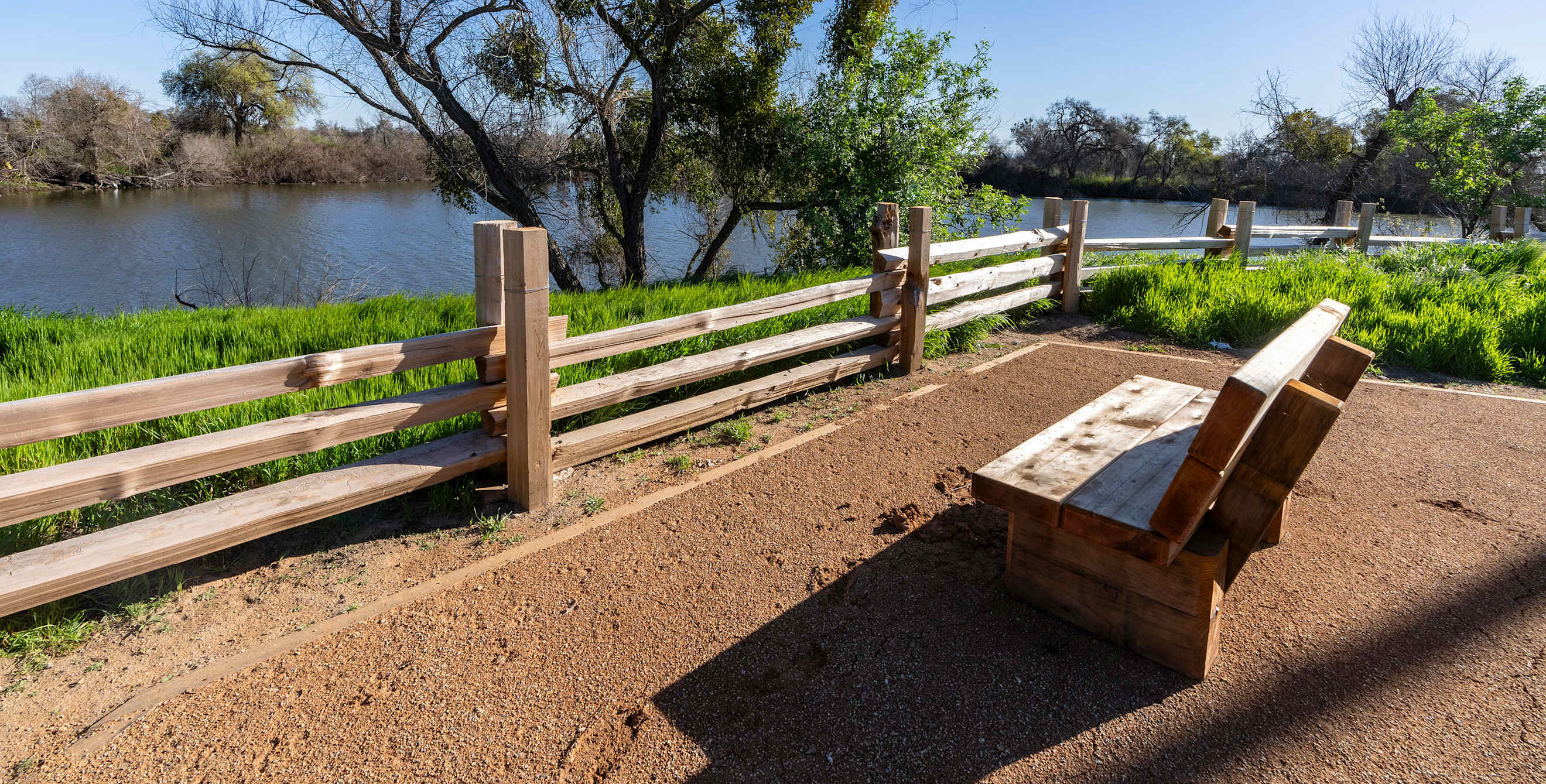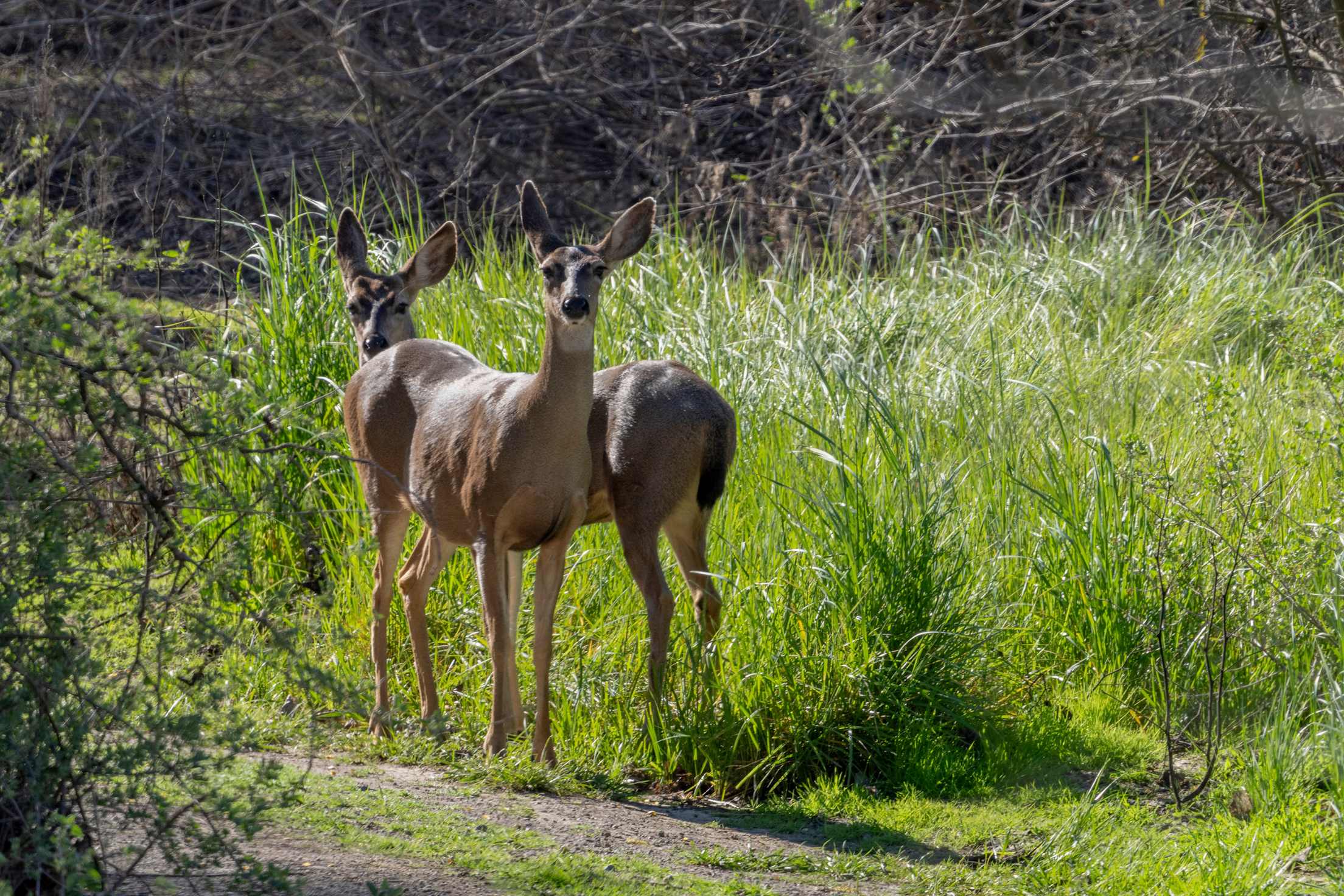
Things to do in California’s Dos Rios State Park
Take a guided tour to visit former ranchland transformed into a place to spy endangered wildlife.

Situated in the San Joaquin Valley, roughly 10 miles west of Modesto, Dos Rios State Park is California’s newest state park. As the Spanish moniker suggests, the park’s focal point is the confluence of two rivers, the San Joaquin and the Tuolumne, bounded by a riparian woodland teeming with wildlife. Yet, just 10 years ago, the property was mostly barren ranchland. Thanks to a sweeping restoration—the largest public-private floodplain rehabilitation project in the state’s history—the approximately 1,600-acre park seems almost a time capsule of the wetland landscapes that predated the region’s agricultural fields.
The idea of restoring Dos Rios Ranch, a former cattle and dairy operation, back to its native floodplain environment took shape in 2012, when River Partners, a non-profit river restoration organization, acquired the property in partnership with the Tuolumne River Trust and numerous public and private funders. Starting with a blank patch of dirt and historic records as a guide, the nonprofit organization removed artificial berms that constricted the two rivers, then meticulously planted more than 350,000 native trees and plants. The process spanned more than 10 years, culminating with the newly created preserve being selected as California’s 281st state park.
Today, the former ranch fields display a verdant landscape of densely planted oaks, cottonwoods, willows, berries, and a variety of herbs and grasses. The benefits extend well beyond its natural beauty. In addition to mitigating flood risks to surrounding communities, an issue the region has had to grapple with in recent years, the restored floodplain replenishes aquifers, filters pollutants for cleaner water, and serves as a natural sink for greenhouse gases.

The restoration has also welcomed back scores of fish, pollinators, and other animals, including many threatened species that are thriving in their renewed home. Dos Rios State Park is now one of five known refuges for the endangered Riparian Brush Rabbit and is credited for the delisting of the once-endangered Aleutian Cackling Goose. Visitors will want to pack binoculars, as the floodplain is also a stop along the Pacific Flyway, a global migration corridor, and hosts thousands of birds throughout the winter, including Swainson’s Hawks, Least Bell’s Vireos, and Sandhill Cranes. There are aquatic creatures, too: River otters, spawning Chinook salmon, and even a stray sea lion have been documented within the park’s waters.
“I can almost guarantee that you’re going to see wildlife,” says Ali Manzo, a state park interpreter who leads guided walking tours at Dos Rios.
Staff are quick to note that Dos Rios is a work in progress. For now, access to the property’s serene backcountry is limited to guided walking tours offered each day the park is open (currently Friday through Sunday). Covering a variety of topics, from biodiversity to photography, the ranger-led walks explore wildlife habitats, old ranch structures, and the convergence of the two rivers. Because scenery and wildlife change with the seasons, rangers often take visitors to the most interesting sight at any given moment, be it a nesting osprey or a patch of blooming California wild roses. The park also offers monthly events such as an evening astronomy program and a sunset hike along the rivers. Walking tours usually range from two to five miles round-trip, and can be reserved in advance on the park’s website. (Tours and park admission are currently free of charge.)
Guests can also take advantage of a large day-use area that includes a temporary, staffed welcome center and a quarter-mile ADA-accessible path along an oxbow pond, an isolated, former stretch of the Tuolumne River. Along the pond, a series of wooden ramadas house shaded picnic tables and grills that can be idyllic lunch spots with views of egrets, ducks, and herons milling about the waters. You can also pick up a bite at nearby Twin Rivers Saloon, an atmospheric roadhouse-style eatery with dollar bill–festooned interiors and hearty grub such as burgers and tri-tip sandwiches. Note that potable water is not yet available at the park, so fill up those reusable bottles before a visit.
The newly christened state park brings welcome recreation to the San Joaquin Valley, which, despite its extensive farmland, has the least amount of public green spaces per capita in the state. Park officials are currently gathering community input for future developments and hope to soon offer increased trail and water access for activities such as kayaking, fishing, and swimming. You can stay current on the latest offerings by checking the park’s website or its social media channel @DosRiosSP. Visitors should also consider a visit to the complementary San Joaquin River National Wildlife Refuge, which sits adjacent to Dos Rios and offers a four-mile trail that meanders through a similar riparian woodland.